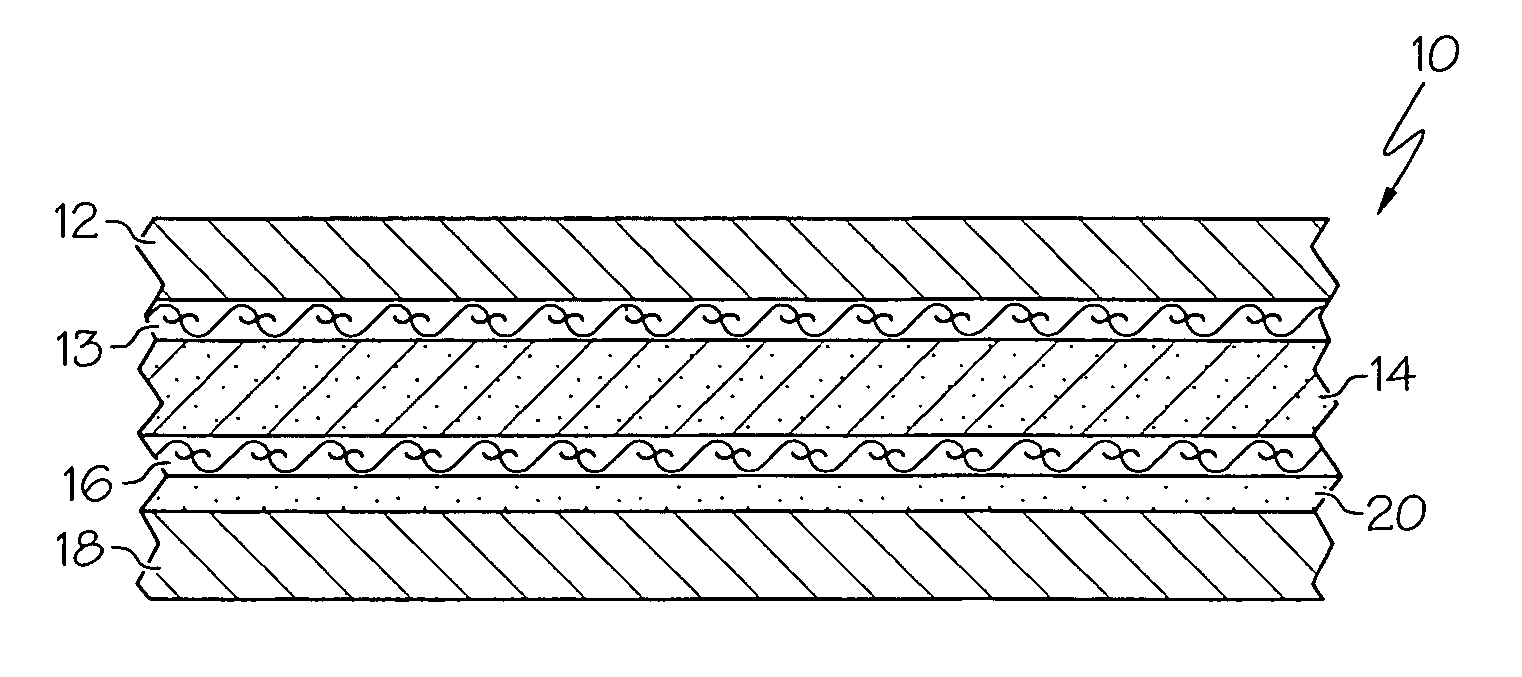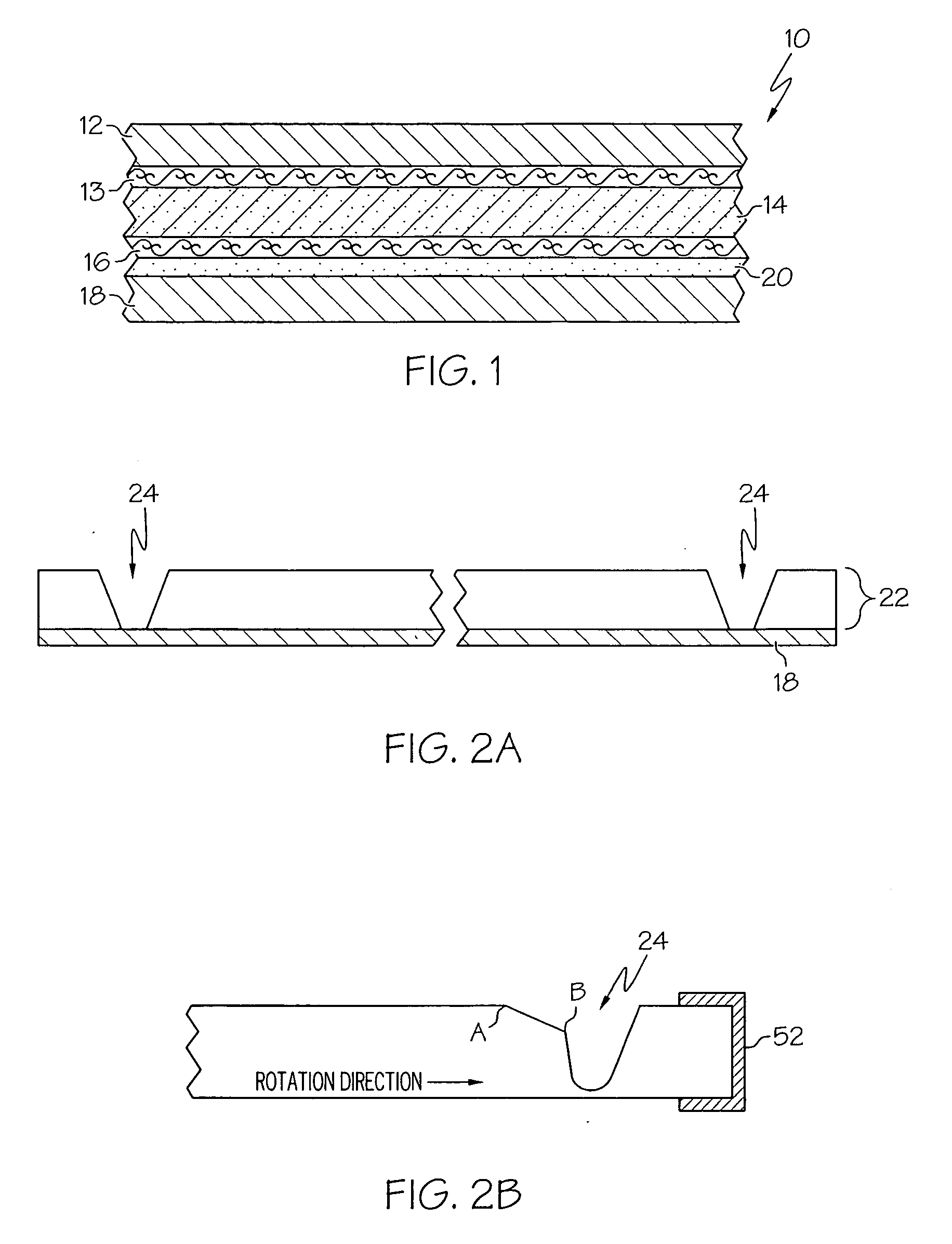Printing blanket including a non-extensible backing layer and a relief area which may be mounted in a variety of lockup mechanisms
a technology of non-extensible backing and relief area, which is applied in the field of printing blankets, can solve the problems of difficult mounting and tensioning of blankets containing metal backings on blanket cylinders, high manufacturing cost of metal backed blankets, and difficult mounting of blankets around small diameter printing cylinders. achieve the effect of minimizing the width of the non-print gap
- Summary
- Abstract
- Description
- Claims
- Application Information
AI Technical Summary
Benefits of technology
Problems solved by technology
Method used
Image
Examples
Embodiment Construction
[0031] The printing blanket of the present invention including a non-extensible backing layer provides a number of advantages over prior metal or fabric backed blankets. Because the backing is comprised of a non-extensible material, it provides better print quality and printing efficiency over its operating life as it eliminates stretching and / or retensioning of the printing blanket during mounting and operation. And, by utilizing a polymeric material as a backing material, the printing blanket is less expensive to manufacture than blankets utilizing metal backings.
[0032] In addition, the blanket of the present invention is significantly easier to mount in standard press lockups than blankets utilizing metal backings. By providing the printing blanket of the present invention with relief areas at each end, the blanket may be used in substantially all conventional types of lockup mechanisms without requiring any modifications to the mechanisms or the use of any special lockup proced...
PUM
 Login to View More
Login to View More Abstract
Description
Claims
Application Information
 Login to View More
Login to View More - R&D
- Intellectual Property
- Life Sciences
- Materials
- Tech Scout
- Unparalleled Data Quality
- Higher Quality Content
- 60% Fewer Hallucinations
Browse by: Latest US Patents, China's latest patents, Technical Efficacy Thesaurus, Application Domain, Technology Topic, Popular Technical Reports.
© 2025 PatSnap. All rights reserved.Legal|Privacy policy|Modern Slavery Act Transparency Statement|Sitemap|About US| Contact US: help@patsnap.com



